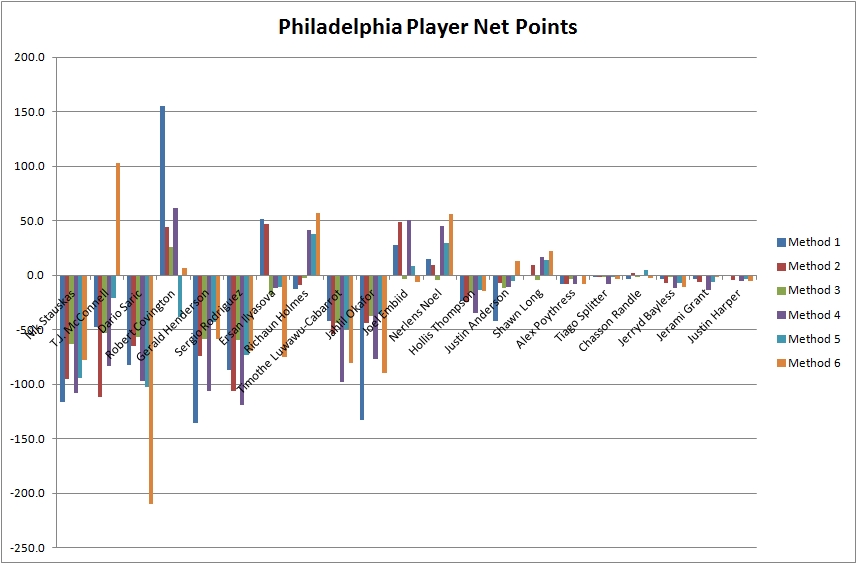
THE LAST TIME THE 76ERS WON AT LEAST 50% OF THEIR GAMES WAS 2011. They have spent six seasons in the process of trying to build a winner. "Trust the process" began a couple years into that six year span. How good does this team have to be to make up for six lousy years?
That is just a subjective question, one for the Philly fans, one for the Philly owners.
The question that is relevant for general managers is how much time they're going to get to actually build a team. Since that 2011 season, the Sixers are on their fourth GM (Rod Thorn, Tony DiLeo, Sam Hinkie, and Brian Colangelo). The roster for that 2011 team was
Instead, the Sixers GM's (most prominently Sam Hinkie, who I am happy to know and think highly of) have acquired a lot of young players and young players are notoriously lousy. They had the youngest team in 2014, 2015, and 2016. How long do you want to stay young? Well, they were the 5th youngest team in 2017, so they're now willing to get older and maybe they're done tanking now, and tanking is definitely what they did.
Tanking - I've done studies that suggest that tanking doesn't work. People apparently hate this conclusion because they yell at me all the time about it. But a lot of people start their analysis of tanking by saying,
I've looked at this extensively, but the easiest case study is the 1997 Draft when many teams tanked to get Tim Duncan. Of course, only the Spurs won that race to the bottom, but a lot of teams tried. "See? Tanking works! The Spurs became great!" That's the argument for tanking. The argument against it is
When the Sixers finally get to average sometime, people will probably forget about the 6+ years it took to get there. If the Sixers finally get to being a good team - not just average - then people will definitely forget the very long process to get there.
As we stare at the 2017 Sixers roster, it's not clear who will be part of the greatness - or averageness - that is to come. Joel Embiid has played under 800 minutes in three years, though he looked really good in those 800 minutes. Ben Simmons has yet to play, but was a consensus #1 pick out of college. Markelle Fultz was a #1 pick even if he wasn't the consensus #1 pick, but, like a lot of young point guards, he will probably be terrible in his first couple years. It's a lot to ask that Embiid, Simmons, and Fultz all end up as part of what this team is in three years (which would make about a ten year process). The good thing for this coming year is that they have 11 first round picks on their roster entering the 2017-18 season, 8 of whom are lottery picks. There is talent and now there is some maturity.
When the players getting the most minutes are negative, you're not going to win. Nik Stauskas had the most minutes for this team in 2017 and TJ McConnell was next. According to one method, TJ McConnell was a very good player, but most methods and most eye tests had him below average. Dario Saric was Rookie of the Month twice in a rather lousy class of rookies. Joel Embiid won the same awared all three months that he actually played. Robert Covington was probably the most productive player, by being solid and actually playing a lot of minutes.

McConnell is one of the most uncertain players across the metrics, but all because of Method 6. Between the other five methods, there is a range of about 90 points, or about 3 wins. But Method 6 creates a range over 200 points, or about 7 wins. That's a lot of uncertainty on one player for a team that won 28 games.
In 786 minutes, Embiid produced as many as about +50 net points or as few as about -10. The best number places him as one of the top 50 players in the league. The worst number makes him about average. Neither number matters if he can't stay on the floor, but if he does, that's not a bad range for your first 786 minutes.